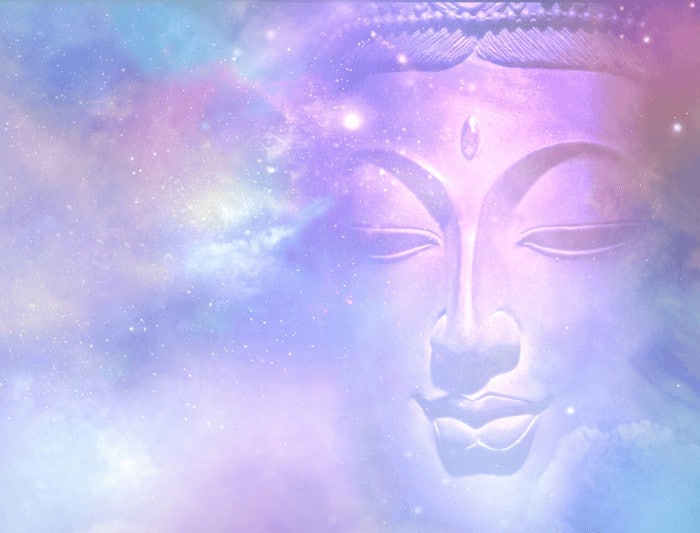In today’s fast-paced world, it’s easy to feel overwhelmed by the constant flow of information and stimuli bombarding our senses. It’s important to take a step back and find ways to cultivate inner peace and stillness amidst the chaos. One powerful tool for achieving this is the practice of pratyahara (withdrawal of the senses) to find and explore states of meditation.
Meditation is a state of being. Pratyahara, or the practice of withdrawing the senses is an essential part of finding states of meditation. It refers to tuning out external stimuli, and focusing our attention inward, often on our breath or a fixed point in the mind, in an effort to achieve states of meditation. Pratyahara is an important concept in yoga and meditation and yields concentration. It is this concentration that is required to quiet the constant fluctuations of the mind, often referred to as Chitta Vritti. Chitta Vritti is seen as a natural part of the human experience, but it can also be a source of distraction and anxiety. By withdrawing the senses, and turning our attention inwards, we learn to observe and calm the constant fluctuations of the mind or waves of thought, cultivating greater awareness, inner stillness and peace.
The Profound Benefits of Mediation for Mind, Body and Spirit
Mediation, the state of being, has been practiced for thousands of years. Recent scientific research has confirmed the many benefits of achieving and maintaining states of meditation, including reducing stress and anxiety, improving focus and concentration, increasing feelings of compassion and empathy, and boosting the immune system. When we move deeper into states of concentration and meditation, our awareness changes. We become aware of what is happening in the perception of our present moment, and become infinitely connected with the non-duality of the creative life force that is living and breathing us. As we continue to deepen our practice, we begin to experience a profound shift in our perception of reality, which can lead to a greater sense of inner peace, contentment, and connection with the world around us. This connection to the creative life force allows us to tap into a wellspring of wisdom, compassion, and joy that is always available to us, and to live our lives with greater awareness, clarity, and purpose.
Styles of Pratyahara for Meditation Practice
There are many different styles of pratyahara and each style has their own unique benefits. Here are a few of the most popular styles:
– Guided meditation: this is a great option for beginners or anyone who finds it challenging to quiet their mind on their own. A teacher or guide leads you through a series of visualisations or affirmations to help you relax and focus your mind.
– Yoga Nidra: this is a form of guided meditation that is practiced lying down. It typically involves body sensing and visualisations to help you relax and release tension.
– Walking meditation: this involves walking slowly and mindfully while paying attention to your breath and the sensations in your body as you move. It can be an enjoyable way to get some exercise while also cultivating inner peace.
– Body Sensing: this is a very effective practice to bring us back to the present moment and into our bodies. It help us to establish and develop objective awareness. It is also great if you are feeling anxious or need to feel more grounded.
– Tratak or gazing meditation: this can be a powerful tool for anyone looking to deepen their practice and find greater peace and stillness within themselves. To practice gazing meditation, the eyes remain open, and the gaze is placed on a specific object, such as a candle flame, the horizon, or a picture.
Preparing Your Space and Mind to Explore States of Meditation
– Creating a calm and peaceful environment for your practice is an essential first step. Find a quiet and comfortable space, a peaceful place where you won’t be disturbed. This could be a room in your home or a quiet place outside in nature. Make sure the space is uncluttered and clean where possible. Consider adding calming elements like candles or plants if appropriate.
– Set the mood. If it is helpful, you could play some soothing music or light a candle to create a calming atmosphere. You could also use essential oils or incense to infuse the room with your favourite fragrance.
– Sit comfortably. Choose a comfortable and stable position for your practice. You can sit on a cushion, or sit up against a wall for support, or a chair with your back straight. Make sure your head, neck, and spine are aligned, and relax your shoulders. Most often I sit on a mediation cushion or make a platform with yoga blocks as this extra elevation makes for a more comfortable and enjoyable practice. (Props are helpful at all stages, if your body is comfortable, you will get more from your practice!)
– Focus on your breath. Begin by focusing on your breath, taking deep breaths in and out through your nose. Allow your breath to be slow and natural. If your mind wanders you can redirect your awareness back to the movement of the breath in your body. It is in this returning to the breath, or to your mantra (a repeated word, phrase, or sound) that we are able to create the concentration that is required to steady the mind and calm the Chitti Vritti (the fluctuations of thoughts).
– Practice noticing any sensations that arise without judgement and without the need to label them, simply notice them with your awareness and return your awareness to your single point of focus.
Reflection and Journaling
After practicing pratyahara (withdrawal of the senses), take time to sit with your experience and even journal about it, reflecting on any thoughts or feelings that came up and if you felt different in any way. Reflect on whether there were any moments where you felt content, at ease, or moments without any thinking, just being. Journaling can help you gain a deeper understanding of your experience and track your progress over time.
Tips for Finding Your Meditation Style and Overcoming Distractions
– It’s not uncommon to have a challenging time focusing on a particular thing, be it the breath, felt sensations in the body, the backdrop that our thoughts arrive on, a candle flame, leaves on a tree, or the sunlight dancing on the surface of the water. Some people can find withdrawing the senses in this way and directing the focus to just one single point very challenging at first, even frustrating or activating. Know that it is ok, and a part of the process. There are many different forms of pratyahara that help us to reach states of meditation. Try different types to find a style that works best for you, knowing that it can also change over time.
– During your pratyahara practice, you may find that your mind starts to wander, or that thoughts and emotions arise, this is natural. Part of the practice is learning to observe these thoughts and feelings with an open and compassionate heart. Remember to practice non-attachment. Observe what comes up without judgment or the need to react. With regular practice, you will start to notice the benefits in your daily life.
– Remember, meditation is a state of being that takes time and patience to develop. Let go of any expectations. There is no need to expect something to happen. Simply be in the experience as it is arising and unfolding. There is no magic “wow” moment that happens. It is a felt sense in the body. A connection to well-being and the creative life force that is living and breathing us. When you find that wellspring of peace, contentment and joy dive in and rest in it!
Cultivating Inner Peace and Stillness
In today’s busy world, it can be easy to get caught up in the hustle and bustle of everyday life, leading to stress, anxiety, and even burnout. Taking the time to cultivate inner peace and stillness through practices like pratyahara and meditative states, can have a profound impact on our overall well-being. Not only can it help reduce stress and anxiety, but it can also improve our ability to focus, connect with others, and cultivate feelings of compassion and empathy.
By making a commitment to a regular practice, even just a few minutes a day, we can create a sense of balance and harmony in our lives. As we become more adept at accessing meditative states, we may find that we are more creative, more resilient, and more in tune with our true selves. So take a few moments each day to turn inward, to let go of the stresses and distractions of the outside world, and to come home to a place of peace and bliss within yourself.
_________________________________________________________________________
Take 5 minutes to ground yourself and find inner peace with this short, guided body-sensing meditation.
Practicing body sensing helps us to observe our thoughts, feelings, and physical sensations with a sense of curiosity and compassion (and without judgment or reaction), so we can begin to experience greater peace, clarity, and connection with ourselves and the world around us. Press the play button on the audio player below to be guided to connect with your body and mind!





